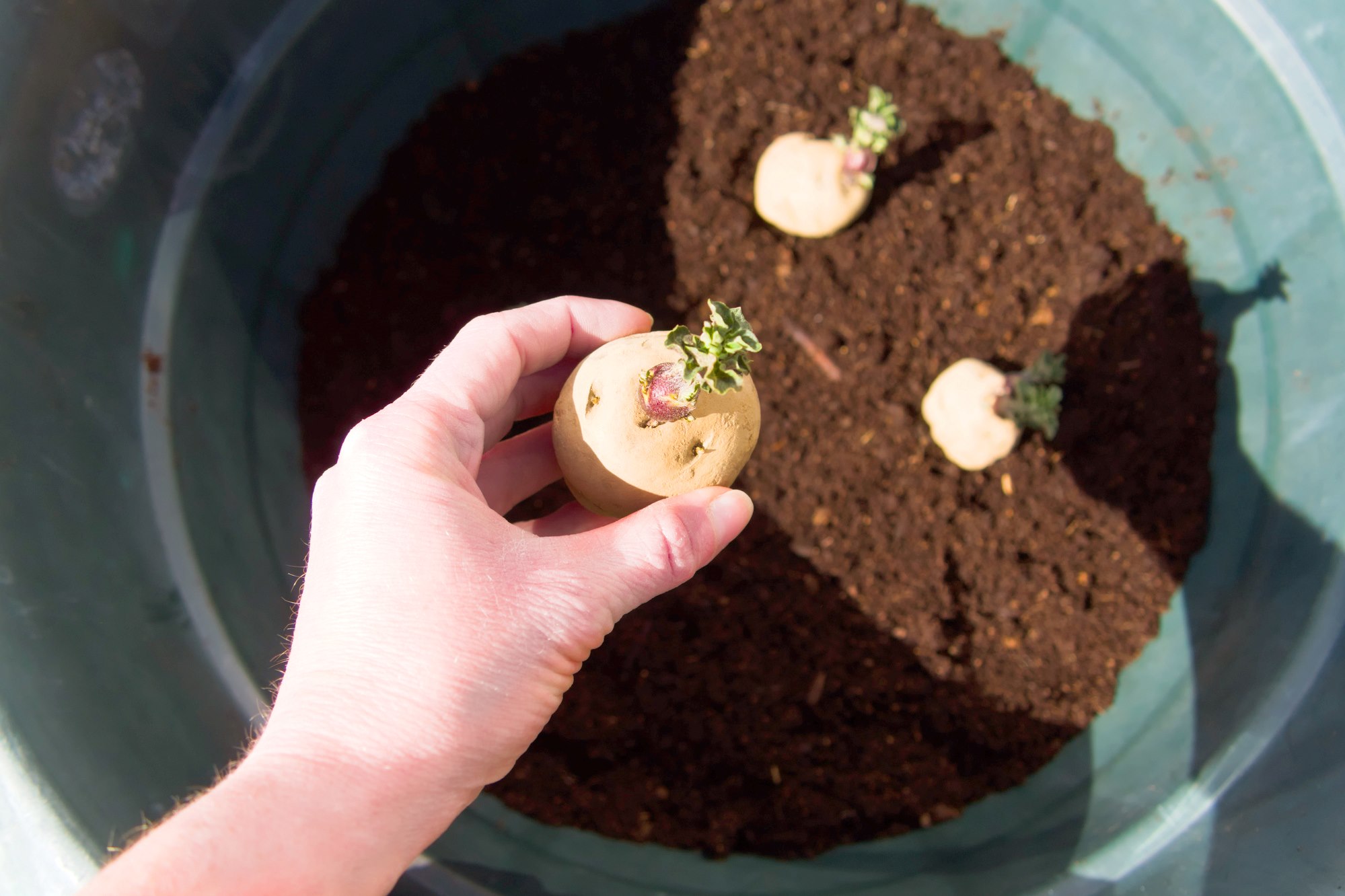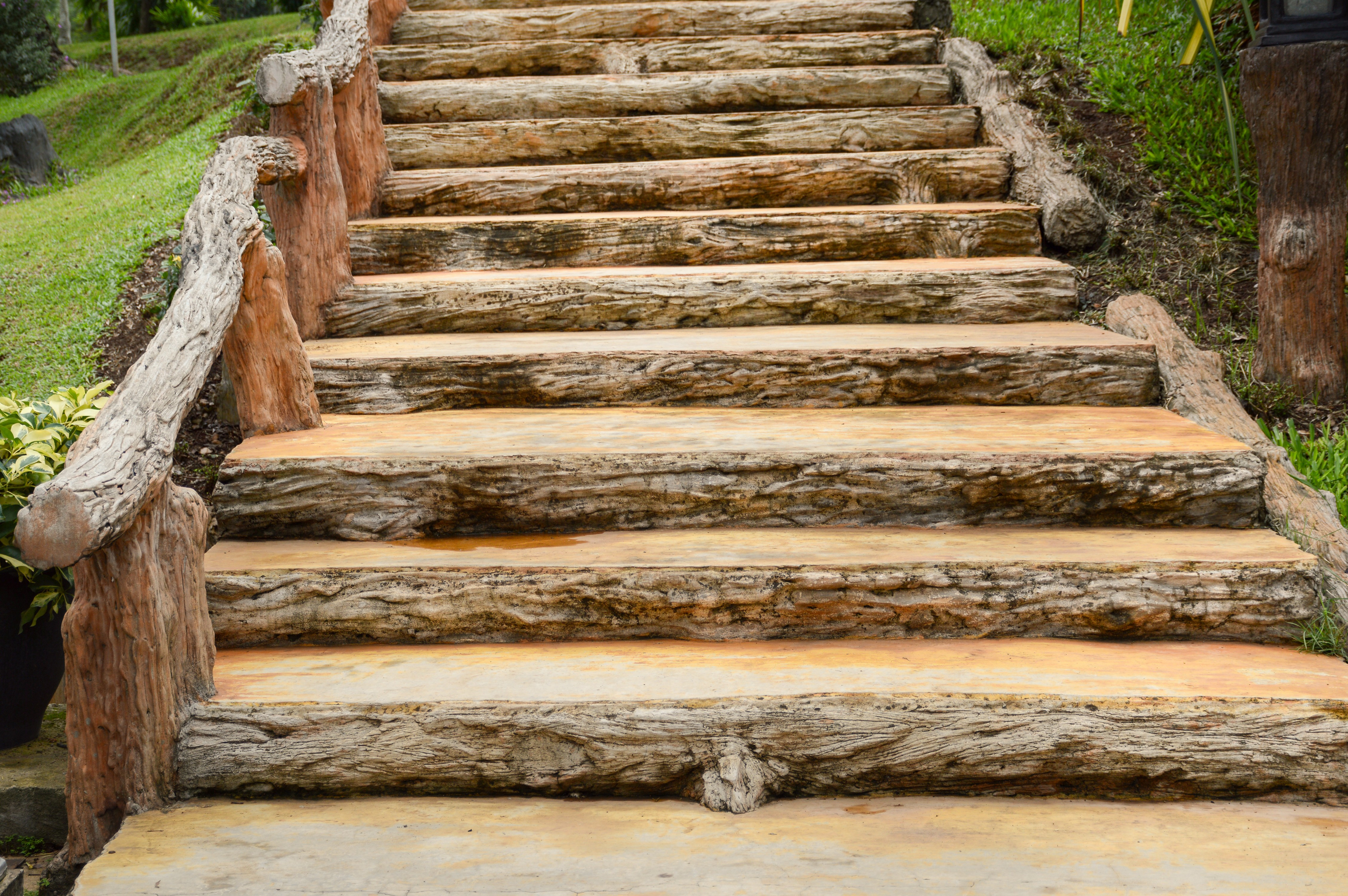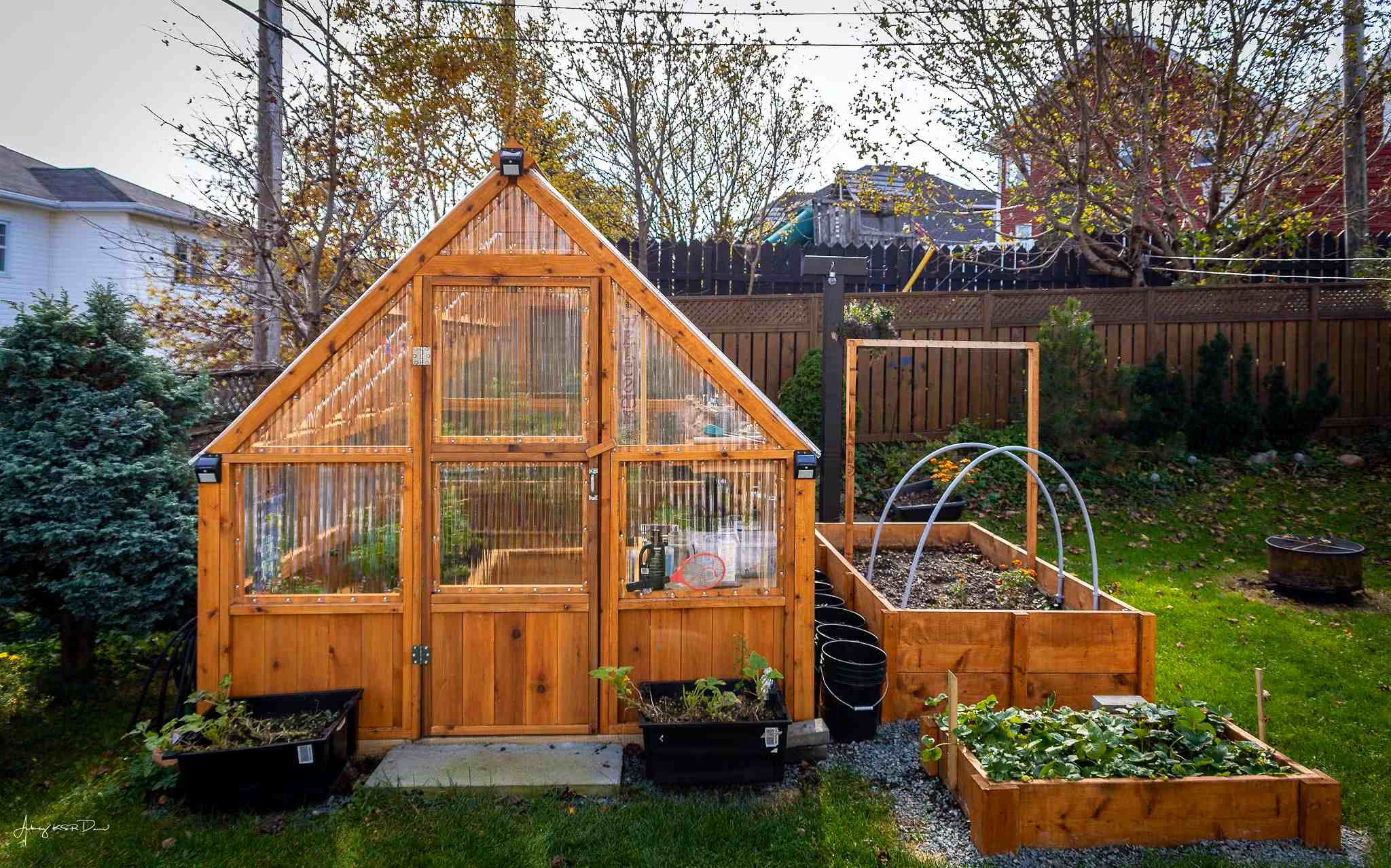Home>Gardening Basics>Understanding Soil>How To Build Up Soil Around House Foundation


Understanding Soil
How To Build Up Soil Around House Foundation
Published: February 13, 2024
Learn the importance of understanding soil and how to build up soil around your house foundation to ensure proper drainage and stability.
(Many of the links in this article redirect to a specific reviewed product. Your purchase of these products through affiliate links helps to generate commission for Chicagolandgardening.com, at no extra cost. Learn more)
Table of Contents
- Introduction
- Why is Soil Around House Foundation Important?
- Signs of Poor Soil Around House Foundation
- Steps to Build Up Soil Around House Foundation
- Selecting the Right Type of Soil
- Preparing the Area for Soil Build-Up
- Adding Soil to the House Foundation
- Proper Soil Grading Techniques
- Maintaining the Soil Around House Foundation
- Conclusion
Introduction
When it comes to maintaining the structural integrity of your home, one often overlooked aspect is the soil around the house foundation. The soil plays a crucial role in providing support, stability, and drainage for the foundation. Understanding soil and the importance of building it up around the house foundation is key to preventing costly damages in the long run.
The soil around the house foundation acts as a buffer zone between the structure and the ground. It helps distribute the weight of the house evenly and prevents excessive settling. Additionally, properly built-up soil can help regulate moisture levels, reducing the risk of foundation cracks and water damage. Therefore, it is essential to ensure the soil around the foundation is in good condition and properly graded.
Unfortunately, soil-related issues are common and can lead to serious problems if left unaddressed. Soil erosion, poor compaction, and improper grading can all result in foundation movement, cracks, and leaks. Identifying the signs of poor soil around the house foundation is crucial in order to take the necessary steps to rectify the problem.
In this guide, we will discuss the signs of poor soil around the house foundation and provide a step-by-step process to help you build up the soil effectively. We will also cover important considerations when selecting the right type of soil, preparing the area for soil build-up, proper soil grading techniques, and ongoing maintenance.
By understanding the importance of soil around the house foundation and implementing these strategies, you can protect your home from potential damage, increase its longevity, and save on costly repairs down the line. So, let’s dive into this comprehensive guide to learn how to build up soil around your house foundation and ensure the stability and durability of your home.
Why is Soil Around House Foundation Important?
The importance of soil around the house foundation cannot be overstated. It serves as a crucial element in maintaining the structural integrity and stability of your home. Here are a few key reasons why soil around the house foundation is important:
1. Support and Stability: The soil around the foundation provides support for the weight of the house. It helps distribute the load evenly, preventing uneven settling that can lead to foundation cracks and structural damage. When the soil is properly built up and compacted, it acts as a solid base for the foundation to rest upon.
2. Drainage and Moisture Regulation: Properly graded soil helps regulate water flow away from the foundation, preventing water from accumulating around the structure. Excess moisture can cause the soil to expand and contract, exerting pressure on the foundation and potentially causing cracks. By building up the soil and ensuring proper drainage, you can minimize the risk of foundation damage due to water-related issues.
3. Prevention of Erosion: Soil erosion can occur due to heavy rainfall or improper landscaping practices. When the soil erodes around the foundation, it compromises its stability and can lead to settling or movement. Building up the soil helps prevent erosion, providing a stable and secure foundation for your home.
4. Pest Control: Some pests, such as termites, can enter your house through the foundation. By properly building up the soil and implementing appropriate pest control measures, you can reduce the risk of pest infestations and protect the structural integrity of your home.
5. Longevity of the Foundation: A well-maintained soil foundation can significantly extend the lifespan of your house. By ensuring that the soil is stable, properly graded, and able to withstand environmental factors, you can minimize the wear and tear on the foundation over time.
In summary, the soil around the house foundation is essential for providing support, stability, and proper drainage. By building up the soil and ensuring its integrity, you can protect your home from foundation damage, maintain its structural stability, and increase its longevity.
Signs of Poor Soil Around House Foundation
Identifying the signs of poor soil around the house foundation is crucial in order to address any issues before they escalate into more significant problems. Here are some common signs that indicate poor soil conditions around the foundation:
1. Foundation Cracks: One of the most obvious signs of poor soil is the presence of cracks in the foundation walls or floors. These cracks can vary in size, ranging from hairline cracks to more severe fractures. Cracks are often caused by shifting or settling of the foundation due to inadequate soil support.
2. Uneven Floors: If you notice that the floors in your home are uneven or sloping, it may be an indication of poor soil conditions. As the soil beneath the foundation moves or settles, it can cause the floors to become unlevel. This can lead to potential safety hazards and should be addressed promptly.
3. Doors and Windows Sticking: Difficulty in opening or closing doors and windows can occur when the foundation shifts due to soil movement. This can cause misalignment and put stress on the door and window frames, resulting in the sticking or jamming of these fixtures.
4. Water Pooling or Drainage Issues: Poor soil grading or drainage can cause water to accumulate around the foundation. If you notice standing water or excessive moisture near the base of your home, it indicates that the soil is not properly sloped or graded away from the foundation. This can lead to a host of problems, including foundation damage and water intrusion.
5. Cracked or Bowing Walls: Another sign of poor soil conditions is the presence of cracks or bowing in the walls, both on the interior and exterior of the house. Soil movement or settling can exert pressure on the foundation walls, causing them to crack or bow. These issues should be addressed promptly to prevent further damage.
6. Gaps around Windows and Doors: When the soil around the foundation shifts, it can create gaps between the walls and the windows or doors. These gaps can allow drafts, pests, and water to enter the house, compromising its structural integrity and energy efficiency.
If you observe any of these signs or have concerns about the soil around your house foundation, it is essential to consult with a professional to assess the situation and recommend appropriate remedial measures. Remember, addressing soil-related issues early on can help prevent more extensive and costly repairs in the future.
Steps to Build Up Soil Around House Foundation
Building up the soil around the house foundation is a multi-step process that requires careful planning and execution. Here are the key steps to follow when building up the soil around your house foundation:
1. Assess the Existing Soil: Before starting the soil build-up process, assess the quality and composition of the existing soil around the foundation. This will help determine if there are any specific soil issues that need to be addressed, such as excessive clay content or poor compaction.
2. Remove Existing Vegetation: Clear the area around the foundation of any existing vegetation, including grass, plants, or weeds. This will provide a clean surface for the soil build-up and prevent the growth of unwanted vegetation that can impact the stability of the soil.
3. Excavation and Grading: If necessary, excavate the soil around the foundation to create a proper slope away from the house. This will ensure effective drainage and prevent water from pooling near the foundation. Grad the soil away from the house, aiming for a slope of at least 6 inches over the first 10 feet.
4. Amend the Soil: Depending on the condition of the existing soil, you may need to amend it with organic matter, such as compost or topsoil. This will help improve the soil structure, drainage, and nutrient content. Mix the amendments thoroughly into the soil to ensure an even distribution.
5. Compact the Soil: Proper compaction of the soil is crucial to provide a stable base for the foundation. Use a compactor or water the soil and use a hand tamper to compact it. Pay close attention to areas close to the foundation walls, ensuring they are adequately compacted to prevent settling.
6. Add New Topsoil: Once the foundation is properly graded and the existing soil is amended and compacted, add new topsoil around the foundation. Spread it evenly, ensuring a uniform layer of at least 6 inches in depth. Smooth and level the topsoil to create a visually appealing finish.
7. Ensure Proper Drainage: After adding the new topsoil, double-check the slope around the foundation and make any necessary adjustments. This will ensure that water flows away from the house, preventing water-related issues.
8. Mulching: Finally, apply a layer of organic mulch around the foundation. Mulch helps retain moisture in the soil, regulates temperature, and suppresses weed growth. It also adds visual appeal to the landscape.
By following these steps, you can effectively build up the soil around your house foundation, creating a stable and well-drained base for your home. Remember, it is important to consult with a professional if you have any specific concerns or if your foundation requires specialized attention.
Selecting the Right Type of Soil
Selecting the right type of soil is crucial when building up the soil around your house foundation. The soil should have the appropriate characteristics to provide stability, proper drainage, and support for the foundation. Here are some factors to consider when selecting the right type of soil:
1. Soil Composition: The composition of the soil is an important consideration. Ideally, the soil should be a well-balanced mixture of sand, silt, and clay. This combination provides good drainage while still retaining enough moisture for healthy plant growth.
2. Drainage Capability: Choose a soil that has good drainage capabilities. Excessively sandy soil tends to drain too quickly, while clay soil retains water for too long. Aim for a soil with moderate drainage to ensure that water is neither retained nor drained too quickly around the foundation.
3. Compaction: The soil should have good compaction properties to provide a stable base for the foundation. Soil with a suitable level of compaction will prevent excessive settling and movement of the foundation over time. Avoid soil that is too loose or sandy, as it may not compact well.
4. Organic Matter: Adding organic matter, such as compost or peat moss, to the soil can improve its fertility and structure. Organic matter helps retain moisture, promotes beneficial microbial activity, and enriches the soil with nutrients. Consider soil that already contains a healthy amount of organic matter or plan on amending the soil with organic materials.
5. pH Level: The pH level of the soil is an important consideration, especially if you plan on growing plants around the foundation. Most plants thrive in slightly acidic to neutral soil with a pH range of 6 to 7. Test the pH of the soil and make any necessary adjustments to ensure optimal growing conditions.
6. Local Climate: Consider the local climate and its impact on the soil. Regions with high rainfall may require soil with better drainage capabilities to prevent waterlogging around the foundation. Similarly, regions with a dry climate may benefit from soil with good moisture retention properties.
7. Consult Professionals: If you are uncertain about the soil requirements specific to your area or property, it is advisable to consult with a landscaping professional or soil engineer. They can provide valuable insights and recommend the most appropriate type of soil for your house foundation.
Remember that the right type of soil will provide a solid foundation for your home, ensuring stability, proper drainage, and a healthy growing environment for plants. Taking the time to select the right soil will help prevent potential foundation issues and contribute to the long-term durability of your home.
Preparing the Area for Soil Build-Up
Before proceeding with the soil build-up process around your house foundation, it is important to properly prepare the area. This preparation ensures a smooth and effective soil build-up, promoting stability and optimal drainage. Here are the key steps to follow when preparing the area for soil build-up:
1. Clear the Area: Remove any existing vegetation, debris, and obstructions from the area around the foundation. This includes grass, weeds, rocks, and any other objects that may interfere with the soil build-up process.
2. Ensure Proper Drainage: Evaluate the existing drainage system around your home. Ensure that gutters, downspouts, and drains are functioning properly and directing water away from the foundation. If necessary, repair or install additional drainage features to ensure effective water management.
3. Address Existing Issues: If you notice any signs of water damage or foundation issues, such as cracks or pooling water, address those issues before proceeding with the soil build-up. Consult with a professional to determine the cause of the problem and implement appropriate solutions.
4. Excavate if Needed: If the existing soil is poorly graded or compacted, it may be necessary to excavate the area around the foundation. This allows for proper leveling and grading of the soil. Use caution during the excavation process to avoid causing damage to the foundation.
5. Install Landscape Fabric: To prevent weed growth and ensure long-term stability, consider installing a landscape fabric between the soil and the foundation. The landscape fabric acts as a barrier, preventing weed seeds from germinating and minimizing the risk of soil erosion.
6. Consider Foundation Protection: If the foundation has exposed areas or is susceptible to water damage, consider applying a waterproofing membrane or coating to protect it from moisture intrusion. This adds an extra layer of protection and helps maintain the integrity of the foundation.
7. Follow Local Building Codes: Before proceeding with any soil build-up or excavation, check with local building codes and regulations. Some areas may have specific requirements or restrictions regarding soil build-up around house foundations. Adhering to these codes ensures compliance and avoids potential issues in the future.
By properly preparing the area before soil build-up, you create a solid foundation for the subsequent steps. Taking the time to address drainage, clear the area, and follow local regulations helps ensure a successful and durable soil build-up that protects your house foundation from potential damage.
Adding Soil to the House Foundation
Once you have prepared the area around the house foundation, it is time to add soil to create the desired build-up. This step is crucial in providing stability, proper grading, and adequate support for the foundation. Here are the key considerations when adding soil to the house foundation:
1. Select the Right Soil: Use soil that matches the requirements identified in the previous steps, such as proper drainage, compaction, and organic matter content. Make sure the soil is free of rocks, debris, or other materials that could affect its stability and drainage.
2. Start with a Thin Layer: Begin by adding a thin layer of soil around the foundation. Spread it evenly using a rake or shovel. This layer serves as the initial base and allows for proper leveling and compacting before adding more soil.
3. Compact the Soil: To ensure stability and prevent settling, compact the soil as you add it. Use a compactor or water the soil and use a hand tamper to carefully compact the layer. Pay close attention to areas near the foundation walls, as they require adequate compaction to prevent future issues.
4. Add Soil Gradually: Continue adding soil in layers, gradually building up the desired height around the foundation. It is recommended to add soil in increments of 2 to 3 inches and compact each layer before adding the next. This ensures proper compaction and minimizes the risk of uneven settlement.
5. Maintain Proper Slope: As you add soil, ensure that the slope away from the foundation is maintained or improved. A gentle slope of at least 6 inches over the first 10 feet is recommended. This promotes effective drainage and prevents water from pooling near the foundation.
6. Keep Exposed Foundation Covered: As you add soil around the foundation, take care to cover any exposed areas of the foundation to protect it from moisture and potential damage. Apply waterproofing membranes or coatings as needed to provide an additional layer of protection.
7. Verify Levelness: Periodically check the levelness of the soil with a level or by visual inspection. Make any necessary adjustments to ensure an even build-up around the foundation. This promotes stability and prevents future settlement issues.
8. Consider Professional Assistance: If you are unsure of the proper techniques or have concerns about the soil build-up process, it is advisable to seek professional assistance. A landscaping or foundation expert can provide guidance and ensure proper soil placement for optimal results.
By following these steps and guidelines, you can effectively add soil to the house foundation, creating a stable base and promoting proper drainage. Taking the time to carefully build up the soil around the foundation contributes to the long-term stability and integrity of your home.
Proper Soil Grading Techniques
Proper soil grading is crucial when building up the soil around the house foundation. It involves creating a slope or gradient that directs water away from the foundation, promoting effective drainage and preventing water-related issues. Here are some techniques for achieving proper soil grading:
1. Evaluate Existing Landscape: Before starting the soil grading process, evaluate the existing landscape around your home. Observe how water flows and accumulates after rainfall. Identify any low spots or areas where water collects near the foundation.
2. Determine the Desired Slope: The recommended slope for soil grading away from the house foundation is a minimum of 6 inches over the first 10 feet. This ensures adequate runoff and prevents water from pooling near the foundation. Measure and mark the desired slope using stakes and string.
3. Start at the Foundation: Begin the soil grading process by ensuring that the soil around the foundation is properly sloped away from the house. Use a shovel or rake to create a gradual slope starting at the base of the foundation walls. Slope the soil downward to meet the desired grade.
4. Create Swales or Berms: In some cases, creating swales or berms can help manage water runoff more effectively. Swales are shallow channels that redirect water away from the foundation, while berms are raised areas that act as barriers to water flow. These techniques can be particularly useful if your property has uneven terrain or drainage challenges.
5. Use a Level: Regularly check the slope and levelness of the soil using a level. This helps ensure that the grading is consistent and prevents excessive settlement or pooling of water in certain areas. Adjust the soil as needed to achieve a smooth and uniform grade.
6. Consider Drainage Systems: In addition to soil grading, consider installing or improving drainage systems around your home. This can include French drains, downspout extensions, or catch basins. These systems help collect and channel water away from the foundation, complementing the soil grading efforts.
7. Mulch for Erosion Control: To further enhance soil grading and prevent erosion, apply a layer of organic mulch to the graded areas. Mulch helps retain moisture, reduce weed growth, and protect the soil from erosion caused by heavy rainfall or runoff.
8. Regular Maintenance: Maintain the graded soil by regularly inspecting and adjusting the grade as needed. Over time, soil may settle or a proper slope may be compromised. Monitor the drainage patterns around your home and make any necessary adjustments to maintain effective soil grading.
Remember, proper soil grading is essential for preventing water-related issues and maintaining the stability of your home’s foundation. If you are unsure about the soil grading techniques or have concerns about the drainage patterns on your property, consult with a professional landscaper or foundation specialist for expert guidance.
Maintaining the Soil Around House Foundation
Maintaining the soil around the house foundation is essential for ensuring the long-term stability and health of your home. Regular maintenance helps prevent soil erosion, maintain proper drainage, and minimize potential foundation issues. Here are some key tips for maintaining the soil around your house foundation:
1. Monitor and Adjust Grading: Regularly inspect the soil around the foundation to ensure that the grading is intact and water is flowing away from the house as intended. If you notice any areas where water is pooling or soil erosion is occurring, make the necessary adjustments to restore the proper slope and prevent further damage.
2. Manage Water Drainage: Pay attention to how water drains around your property. Ensure that gutters, downspouts, and drainage systems are clear from debris and functioning properly. Redirect water away from the foundation using downspout extensions or French drains if necessary. Proper water management helps prevent excess moisture and potential water damage to the foundation.
3. Apply Mulch: Maintain a layer of mulch around plants, flower beds, and landscaping features near the foundation. Mulch helps retain moisture in the soil, regulate temperature, and prevent weed growth. It also acts as a protective barrier against erosion caused by heavy rainfall or runoff.
4. Control Vegetation: Keep vegetation, such as trees and shrubs, at a safe distance from the foundation. Overgrown roots can penetrate and disrupt the integrity of the foundation. Regularly trim and maintain plants to prevent them from getting too close to the house.
5. Monitor Soil Moisture: Check the moisture levels of the soil around the foundation regularly. Avoid allowing the soil to become overly dry or excessively saturated. Maintain a balance of moisture to ensure optimal soil conditions for the foundation.
6. Avoid Overwatering: Be mindful of watering practices near the foundation. Overwatering can lead to soil erosion, increased hydrostatic pressure on the foundation, and potential structural damage. Water plants and lawn areas sparingly and only when necessary.
7. Watch for Foundation Cracks or Settling: Regularly inspect the foundation for any signs of cracks, settling, or movement. If you notice any issues, consult with a foundation specialist to address them promptly. Timely intervention can prevent further damage and costly repairs.
8. Seek Professional Assistance: If you are unsure about the maintenance needs of the soil around your house foundation, consider consulting with a landscaping professional or foundation specialist. They can provide expert advice on specific maintenance requirements for your property and address any concerns you may have.
By following these maintenance tips and regularly monitoring the soil around your house foundation, you can help ensure its long-term stability and integrity. Proper maintenance not only protects your home from potential foundation issues but also contributes to the overall health and beauty of your landscape.
Conclusion
Building up and maintaining the soil around the house foundation is a critical aspect of protecting your home’s structural integrity and preventing costly damages. Understanding the importance of soil, identifying signs of poor soil conditions, and following the proper steps to build up the soil are essential for maintaining a stable foundation.
By selecting the right type of soil, properly preparing the area, and ensuring proper soil grading, you can create a solid base that supports your house foundation and promotes effective drainage. Regular maintenance, including monitoring soil moisture, managing water drainage, and controlling vegetation, helps prevent soil erosion and foundation issues.
Remember to consult with professionals if you have specific concerns or if your foundation requires specialized attention. Their expertise can ensure that you follow the best practices and take the necessary steps to maintain the stability and longevity of your home.
By implementing these strategies and staying vigilant about the condition of the soil around your house foundation, you can protect your home from potential structural damage, increase its durability, and save on costly repairs in the future. Take the time to care for your soil and foundation, and your home will thank you for years to come.








